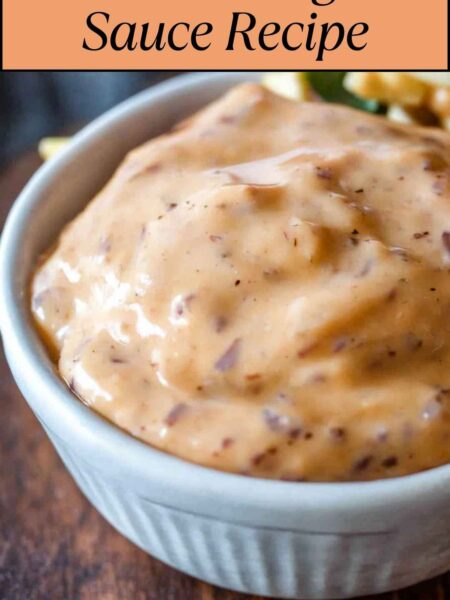When it comes to tzatziki sauce, the possibilities are virtually endless. This creamy, tangy delight pairs beautifully with a variety of dishes. Picture a plate teeming with grilled chicken, fragrant lamb, or crispy falafel. Each bite, complemented with the refreshing tzatziki, elevates your meal to another level.
But that’s just the tip of the iceberg! Scoop it up with warm pita bread, drizzle it over a fresh Greek salad, or serve it as a dip for crisp veggies. I often find myself doubling this recipe because it’s just that popular in my home.
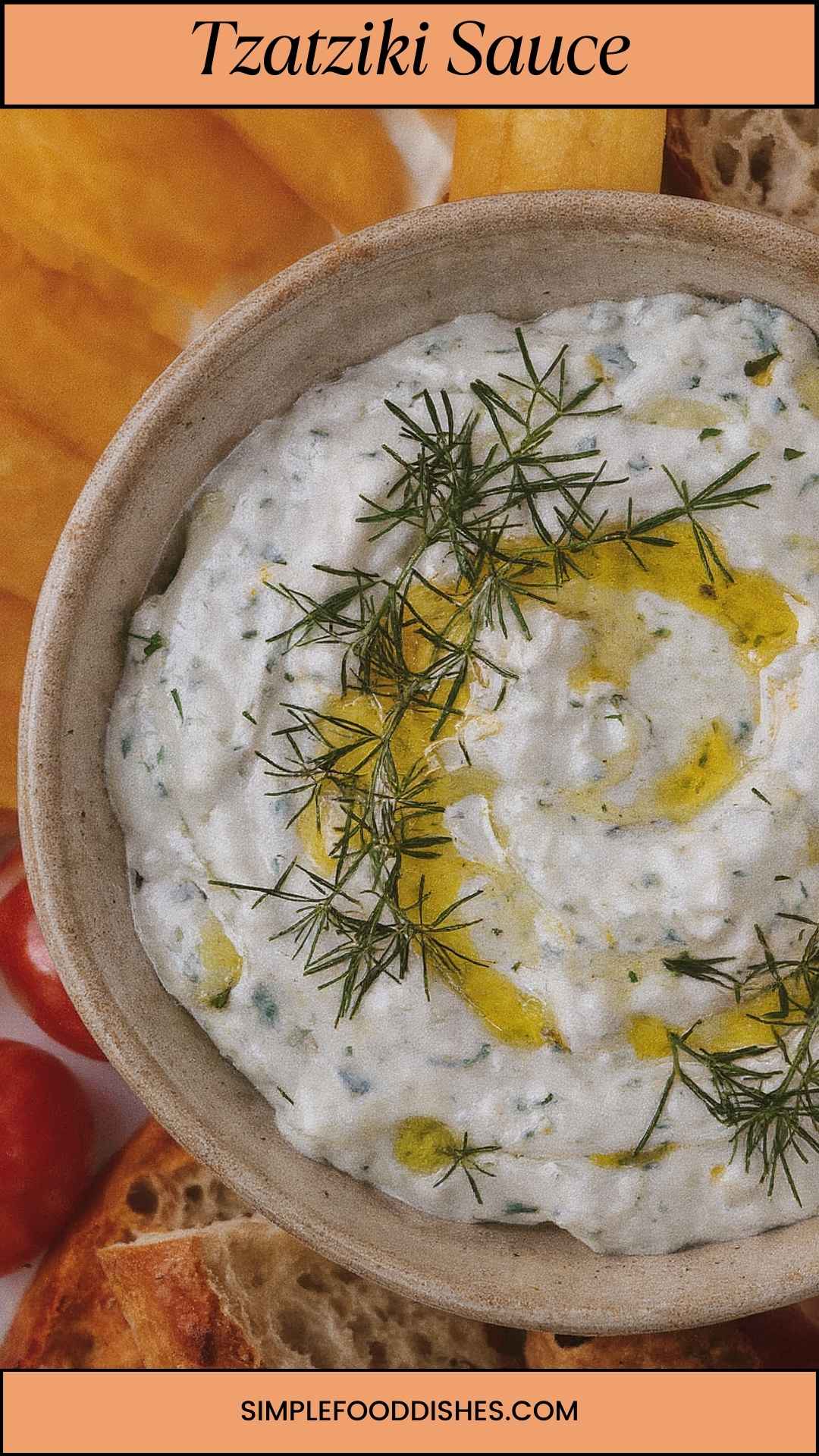
What is Tzatziki Sauce?
At its core, tzatziki is a yogurt-based condiment that marries fresh cucumber with garlic, herbs, and a splash of vinegar or lemon juice. Traditionally, it acts as a dip, but it can transform any dish with its refreshing qualities. Imagine slathering it on a warm gyro or using it as a dip for pita chips.
What is the Flavor Profile of This Dish?
Tzatziki sauce boasts a delightful balance of creamy richness, tanginess, and freshness. The yogurt lends a smooth, thick consistency, while cucumber adds a cool crunch. Garlic introduces a gentle bite, elevating the overall profile. Fresh herbs like dill or mint can bring a bright note, while a pinch of salt and white pepper rounds it all out.
What Makes This Recipe Different From Other Tzatziki Sauce Recipes?
While many tzatziki recipes might call for similar ingredients, my version focuses on authenticity while emphasizing freshness. I use full-fat Greek yogurt for a richer mouthfeel. Also, the choice of herbs is a standout feature. I often alternate between dill and mint, depending on what I have on hand. Adding lemon zest gives a pop of brightness that truly makes this tzatziki sauce shine.
Ingredients You’ll Need
Here’s the breakdown of the ingredients for the tzatziki sauce:
2 cups plain full-fat Greek yogurt: Provides creaminess and tanginess.
3/4 English cucumber: Choose this for its mild flavor and minimal seeds.
4 to 5 garlic cloves, peeled and finely grated or minced: Start with fewer for a milder taste.
1 teaspoon kosher salt, divided: Enhances flavors.
1 teaspoon white wine vinegar: Adds acidity.
1 tablespoon Early Harvest Greek extra-virgin olive oil: For richness and flavor.
1/4 teaspoon ground white pepper: Subtle warmth.
Handful of chopped fresh dill or mint leaves (optional): Adds freshness and personality.
Zest of 1/2 lemon (optional): A bright note that enhances flavor.
Pinch of smoked paprika (optional): Provides depth with just a hint of warmth.
Warm pita bread, for serving: Perfect for dipping.
Fresh sliced vegetables, for serving: Adds crunch and color.
With these fresh ingredients, you’ll create a tzatziki sauce that is vibrant and unforgettable.
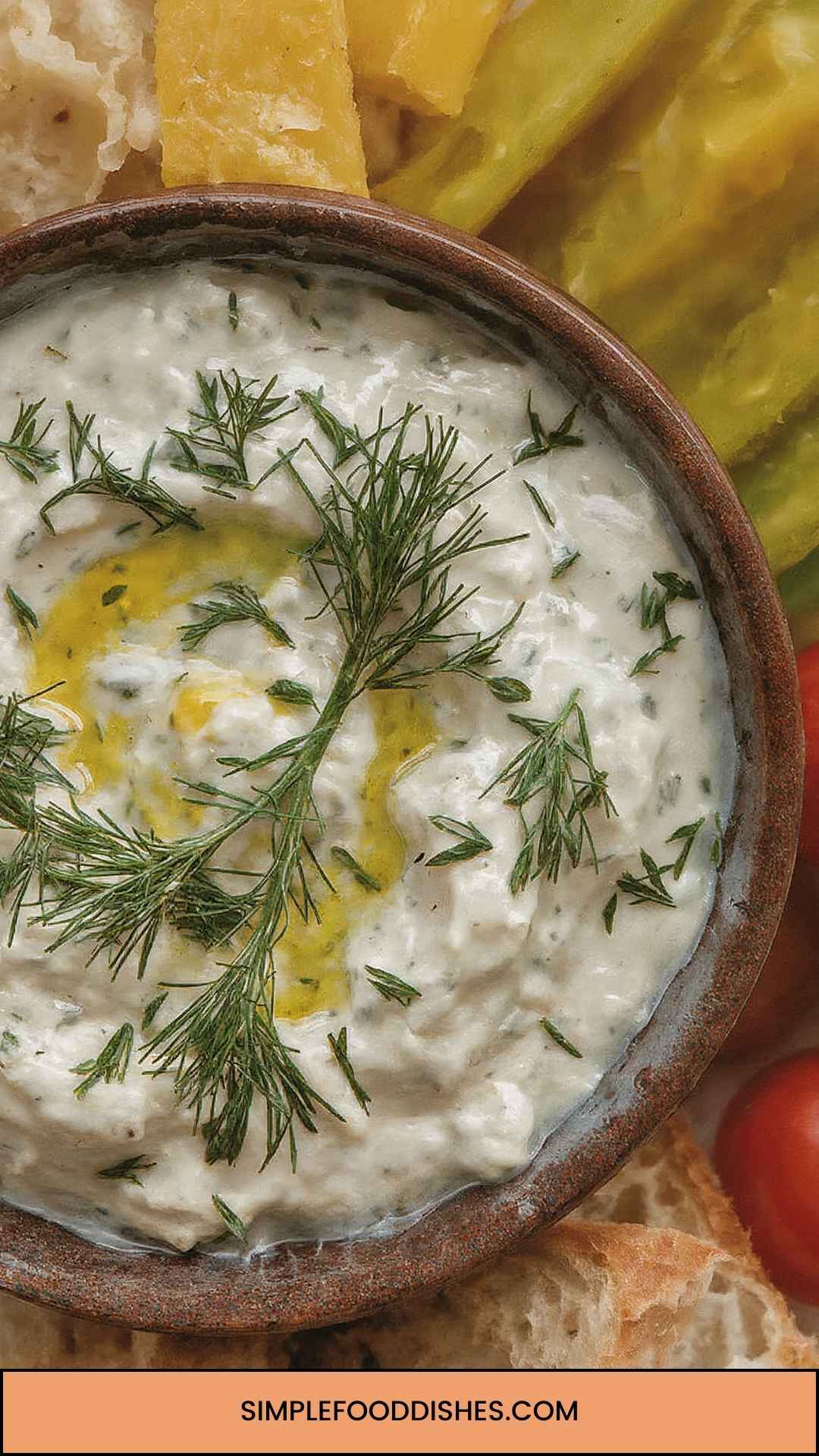
Step-by-Step Directions
Let’s break this down into manageable steps. Follow along, and soon you’ll have your own batch of tzatziki.
Step 1: Prepare Your Cucumber
Start by washing your cucumber. I prefer using an English cucumber for this recipe due to its smooth skin and sweet flavor. Partially peel the cucumber in stripes to allow some skin for color and texture. Grate or finely chop the cucumber. After, place it in a clean kitchen towel and squeeze out excess moisture. This is crucial; too much liquid can make your tzatziki watery.
Step 2: Mix the Ingredients
In a medium bowl, combine the Greek yogurt, grated cucumber, minced garlic, and half of the kosher salt. Make sure to mix everything well. The yogurt should be the star here, creating that luscious base.
Step 3: Add Flavor Enhancers
Next, add the white wine vinegar, olive oil, and remaining salt. Stir in the ground white pepper and fresh herbs if you’re using them. If you’re feeling adventurous, add the lemon zest and smoked paprika. This combination enriches the flavor and adds complexity.
Step 4: Taste and Adjust
Give your tzatziki a taste. Here’s your chance! Adjust the seasoning as needed. A little more salt, an extra pinch of herbs—make it yours. Personalizing the flavors can enhance your tzatziki’s character.
Step 5: Chill the Sauce
Cover the bowl and pop it in the fridge for at least an hour. This step allows the flavors to meld beautifully. Plus, the colder tzatziki is, the more refreshing it feels.
Step 6: Serve and Enjoy
When ready to serve, pull it out of the fridge. It pairs perfectly with grilled meats, fresh veggies, or even as a refreshing spread on sandwiches. I often serve mine with warm pita bread for dipping.
Tips on Making Tzatziki Sauce
Here are some quick tips for crafting the perfect tzatziki sauce:
Use fresh ingredients: Fresh garlic and herbs amplify the flavors.
Grate, don’t chop: Grating cucumber releases moisture effectively. It’s all about the texture!
Control the garlic: Start with less and adjust based on your taste preference.
Let it chill: The longer you let it sit, the better the flavors develop.
Experiment with herbs: Swap dill for mint or basil if you’re looking for a twist.
Nutrition Information
Tzatziki sauce is not just delicious; it also comes with some health benefits:
Calories: ~50 calories per 1/4 cup serving
Protein: ~5g (thanks to Greek yogurt)
Carbohydrates: ~4g
Fat: ~3g (depends on the type of yogurt and olive oil used)
Fiber: ~1g
Vitamins: A good source of vitamins A and C, along with calcium.
Tzatziki is a nutritious addition that can complement a variety of diets. It’s low in calories, high in protein, and can be made adaptable for many health-conscious eaters.
How Can I Store This Tzatziki Sauce?
To store your tzatziki sauce:
In an airtight container: Tightly seal it and store in the refrigerator.
Use within 3-5 days: Fresh is best! The flavors will be at their peak during this period.
If you plan to use it beyond a week, consider freezing. Just remember, the texture may change slightly upon thawing.
Substitute Options for Ingredients
Not all kitchens are stocked the same. If you find yourself missing an ingredient, here are some chill alternatives:
Greek yogurt: Try regular plain yogurt or a plant-based yogurt for a dairy-free version. Both options will work, but the flavor may differ slightly.
English cucumber: Any cucumber will do, but seedless varieties like Persian cucumbers work best to reduce excess moisture.
White wine vinegar: Lemon juice or apple cider vinegar can substitute well if you seek a different tang.
Olive oil: Avocado oil can step in as a less strong-flavored oil, while providing healthy fats.
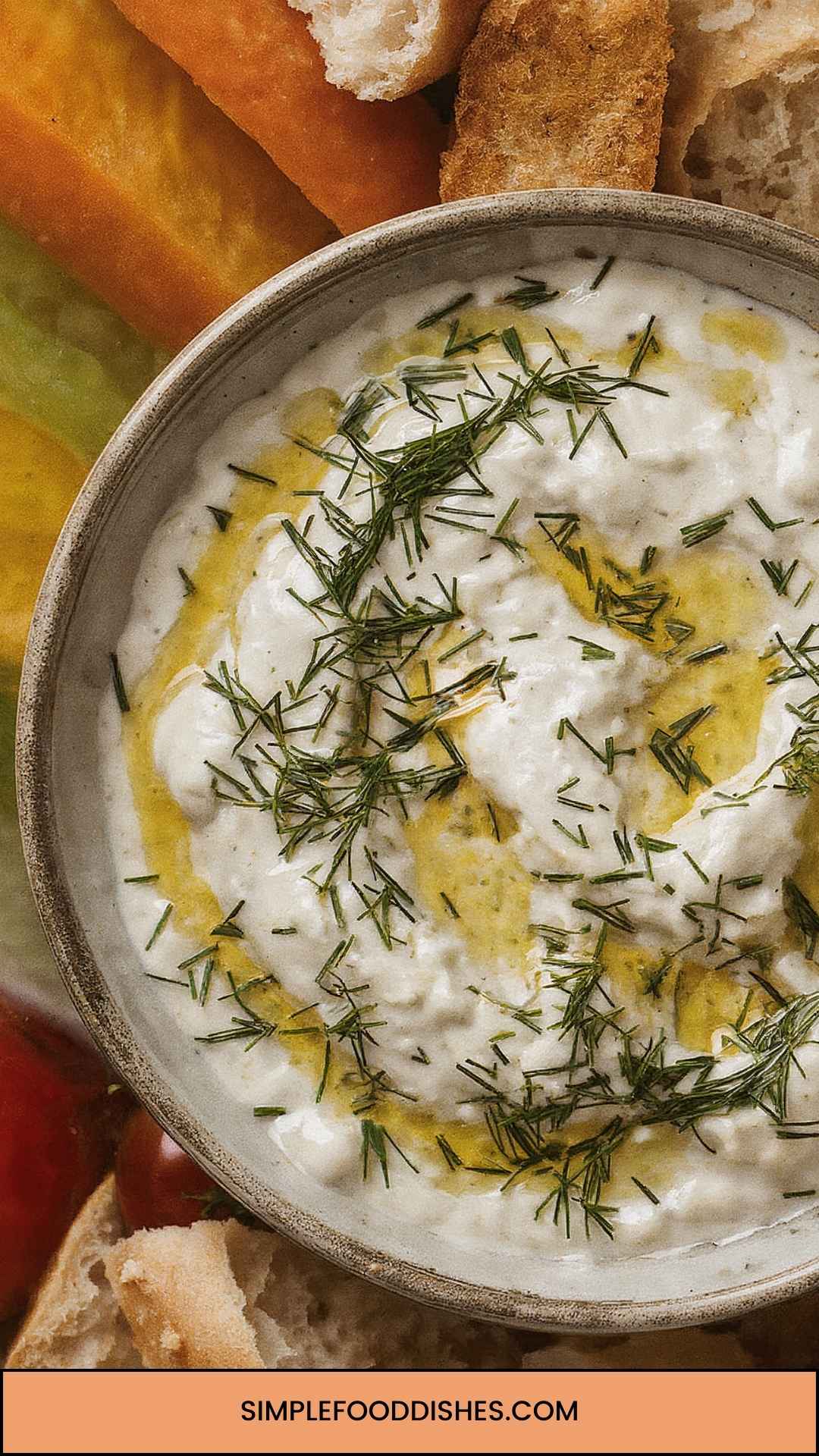
Conclusion: Enjoy the Tasty Journey
Creating your own tzatziki sauce is a rewarding experience that proves how simple ingredients can come together for a remarkable result. Whether you’re dipping, drizzling, or dolloping, tzatziki elevates your meals in a unique way. I hope this recipe inspires you to bring a taste of the Mediterranean right into your kitchen.
So, gather those ingredients, blend them well, and enjoy the countless ways you can savor this delicious sauce. Don’t forget to share your creations with friends and family. They’ll be utterly impressed by your culinary skills. And trust me, once you’ve tasted homemade tzatziki, you’ll wonder why you ever settled for store-bought versions!
You’ll also like the following recipes!
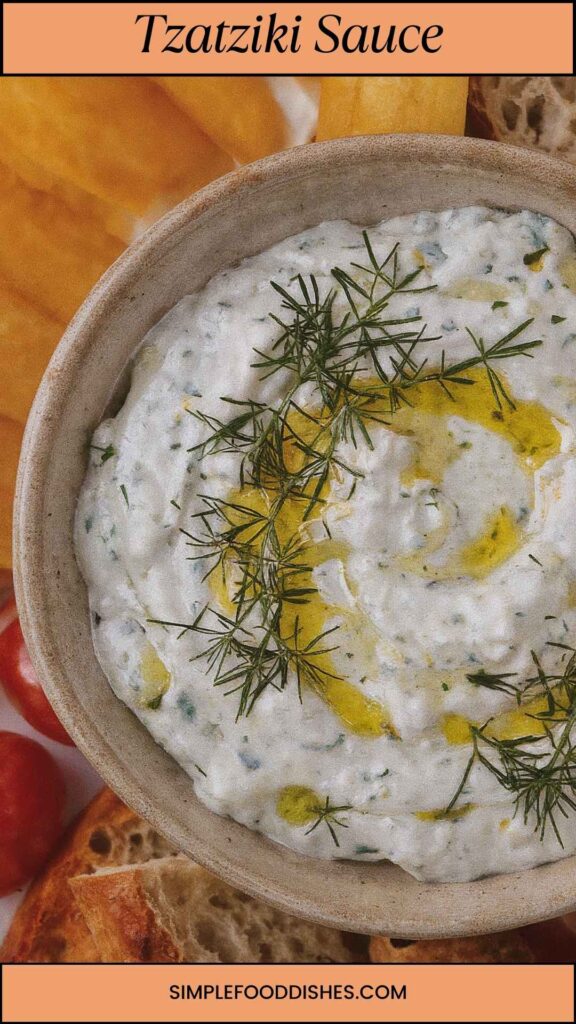
Tzatziki Sauce – Simple Food Dishes
Description
Tzatziki sauce is a staple in Mediterranean cuisine, with roots firmly planted in Greece. It’s creamy, flavorful, and packed with fresh ingredients. As a food enthusiast, I’ve experimented with various recipes and techniques. Each batch of tzatziki brings me back to sun-kissed afternoons enjoying the flavors of the Mediterranean. Today, I’m excited to share my favorite tzatziki sauce recipe with you.
Creating tzatziki at home isn’t just about mixing ingredients; it’s a journey that begins with understanding the basics. The creamy texture of Greek yogurt contrasts beautifully with the crunch of cucumber, while garlic and herbs add layers of flavor.
Ingredients
Instructions
Step 1: Prepare Your Cucumber
-
Start by washing your cucumber. I prefer using an English cucumber for this recipe due to its smooth skin and sweet flavor. Partially peel the cucumber in stripes to allow some skin for color and texture. Grate or finely chop the cucumber. After, place it in a clean kitchen towel and squeeze out excess moisture. This is crucial; too much liquid can make your tzatziki watery.
Step 2: Mix the Ingredients
-
In a medium bowl, combine the Greek yogurt, grated cucumber, minced garlic, and half of the kosher salt. Make sure to mix everything well. The yogurt should be the star here, creating that luscious base.
Step 3: Add Flavor Enhancers
-
Next, add the white wine vinegar, olive oil, and remaining salt. Stir in the ground white pepper and fresh herbs if you're using them. If you’re feeling adventurous, add the lemon zest and smoked paprika. This combination enriches the flavor and adds complexity.
Step 4: Taste and Adjust
-
Give your tzatziki a taste. Here’s your chance! Adjust the seasoning as needed. A little more salt, an extra pinch of herbs—make it yours. Personalizing the flavors can enhance your tzatziki’s character.
Step 5: Chill the Sauce
-
Cover the bowl and pop it in the fridge for at least an hour. This step allows the flavors to meld beautifully. Plus, the colder tzatziki is, the more refreshing it feels.
Step 6: Serve and Enjoy
-
When ready to serve, pull it out of the fridge. It pairs perfectly with grilled meats, fresh veggies, or even as a refreshing spread on sandwiches. I often serve mine with warm pita bread for dipping.
Nutrition Facts
Servings 2
- Amount Per Serving
- Calories 50kcal
- % Daily Value *
- Total Fat 3g5%
- Total Carbohydrate 4g2%
- Dietary Fiber 1g4%
- Protein 5g10%
* Percent Daily Values are based on a 2,000 calorie diet. Your daily value may be higher or lower depending on your calorie needs.
Note
- Use fresh ingredients: Fresh garlic and herbs amplify the flavors.
- Grate, don’t chop: Grating cucumber releases moisture effectively. It’s all about the texture!
- Control the garlic: Start with less and adjust based on your taste preference.
- Let it chill: The longer you let it sit, the better the flavors develop.
- Experiment with herbs: Swap dill for mint or basil if you're looking for a twist.





